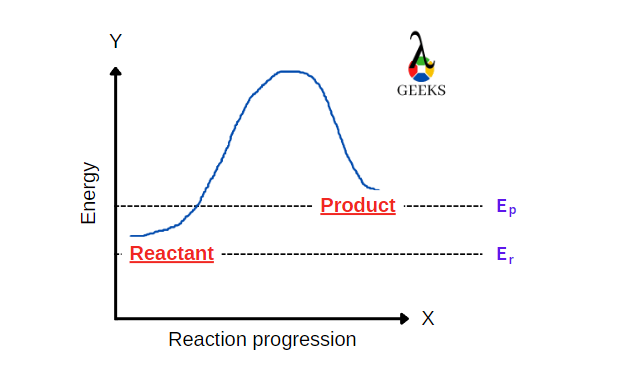FeCl3 is an inorganic compound having a +3-oxidation state. HBr is a strong acid. Let us see how these two react with each other through this article.
Ferric chloride (FeCl3), also called iron (III) chloride, is an anhydrous compound. Its colour changes as the viewing angle is changed. HBr is a strong acidic compound generally present in its gaseous state. It is highly soluble in water. An aqueous solution of HBr is generally used for preparing bromides.
We will discuss some useful facts about HBr+FeCl3 reaction, like type of reaction, redox reaction, products and balanced chemical equation in this article.
What is the product of HBr and FeCl3
Ferric bromide (FeBr3) and Hydrochloric acid (HCl) are the products formed during the reaction of HBr and FeCl3. The chemical equation for the reaction is:
HBr + FeCl3 = HCl + FeBr3
What type of reaction is HBr + FeCl3
HBr + FeCl3 is a double displacement reaction.
How to balance HBr + FeCl3
HBr + FeCl3 reaction balanced chemical equation is,
3HBr + FeCl3 = 3HCl + FeBr3
- The unbalanced chemical equation is,
- HBr + FeCl3 = HCl + FeBr3
- To check if all the atoms in the chemical equation are equal or not. In this case, the number of hydrogens, boron and chlorine are not equal.
- Therefore, we multiply both HCl and HBr with a coefficient of 3.
- Thus, the balanced chemical equation is,
- 3HBr + FeCl3 = 3HCl + FeBr3
HBr + FeCl3 titration
The titration between HBr and FeCl3 is not feasible because FeCl3 is a solid substance and cannot be titrated through any process.
HBr + FeCl3 net ionic equation
The net ionic equation HBr + FeCl3 reaction is,
3H+ (aq.) + 3Br– (aq.) + Fe3+ (aq.) + 3Cl (aq.) = Fe3+ (aq.) + 3Br (aq.) + 3H+ (aq.) + 3Cl– (aq.)
Following steps should be used to derive the net ionic equation:
- Write the balanced chemical equation,
- 3HBr + FeCl3 = 3HCl + FeBr3
- Specify each compound with its chemical state (s, l, g, aq) in the equation.
- 3HBr (aq.) + FeCl3 (aq.) = 3HCl (aq.) + FeBr3 (aq.)
- Split the strong electrolytes into their respective ions.
- 3H+ (aq.) + 3Br– (aq.) + Fe3+ (aq.) + 3Cl (aq.) = Fe3+ (aq.) + 3Br (aq.) + 3H+ (aq.) + 3Cl– (aq.)
- Cancel the spectator ions to obtain the net ionic equation. Here all the ions are spectator ions; Therefore, it is a case of No Reaction.
HBr + FeCl3 conjugate pairs
HBr and FeCl3 collectively do not have any conjugate pairs because they don’t differ by any number of protons.
HBr and FeCl3 intermolecular forces
HBr + FeCl3 reaction has the following intermolecular forces,
- The intermolecular forces between FeBr3 molecules are ionic-dipole interactions.
- HBr contains dipole-dipole interaction between its molecules.
- Electrostatic attraction is present in FeCl3 molecules.
HBr + FeCl3 reaction enthalpy
HBr and FeCl3 reaction enthalpy is -255.96 kJ/mol. The standard enthalpy of formation of reactants and products is as follows:
| Molecules | Reaction enthalpy (in kJ/mol) |
|---|---|
| HBr | -36.23 |
| FeCl3 | -549.98 |
| FeBr3 | -413.15 |
| HCl | -167.16 |
Reaction Enthalpy ΔHf = Standard enthalpy of products – Standard enthalpy of reactants
Thus, ΔHf = (-413.15 – 167.16) – (-549.98 – 36.23)
ΔHf = -255.96 kJ/mol.
Is HBr + FeCl3 a buffer solution
HBr + FeCl3 is not a buffer solution because HBr is a strong acid and there must be present a weak acid to get a buffer solution.
Is HBr + FeCl3 a complete reaction
HBr + FeCl3 reaction is a complete reaction, as no further steps cannot be performed after forming FeBr3.
Is HBr + FeCl3 an exothermic or endothermic reaction
HBr + FeCl3 reaction is an exothermic reaction as the reaction enthalpy has a negative value for the chemical equation.

Is HBr + FeCl3 a redox reaction
HBr + FeCl3 reaction is not a redox reaction because the oxidation state of each atom is the same before and after the reaction.
Is HBr + FeCl3 a precipitation reaction
HBr + FeCl3 reaction is not a precipitation reaction as no solid product is obtained during the process.
Is HBr + FeCl3 reversible or irreversible reaction
HBr + FeCl3 reaction is an irreversible reaction as the products cannot be formed back by any means of a chemical process.
Is HBr + FeCl3 displacement reaction
HBr + FeCl3 reaction is a double displacement reaction in which H and Fe atoms displace each other from their compound to create new products.
Conclusion
This article concludes that FeCl3 has a different intermolecular structure which reflects light at different angles to appear in a different colour when seen through different angles. HBr is very useful from an industrial point of view when there is a need to prepare bromides. They are irreversible and follow a double displacement reaction.
Read more facts on HBr:

Hi, I am Sahil Singh. I completed my graduation in Bachelor of Science. I always have keen interest in Physics & Chemistry. I worked on my own blog for 1 year in the technology and gaming niche. I try my best to provide valuable knowledge through my articles.
You can reach out to me on LinkedIn: